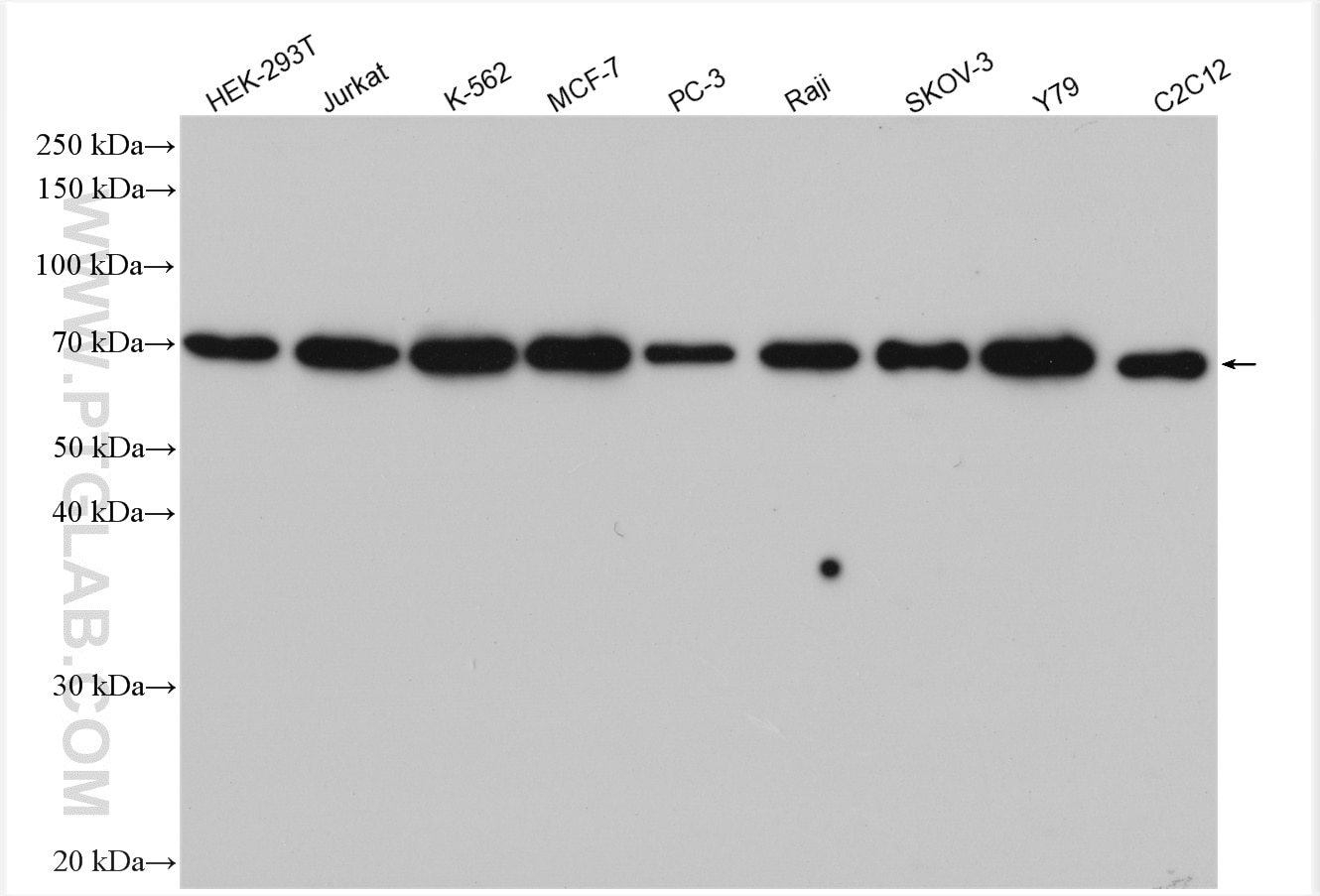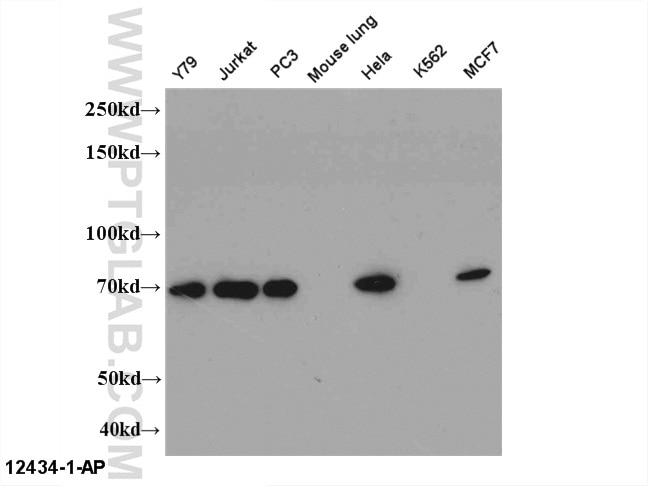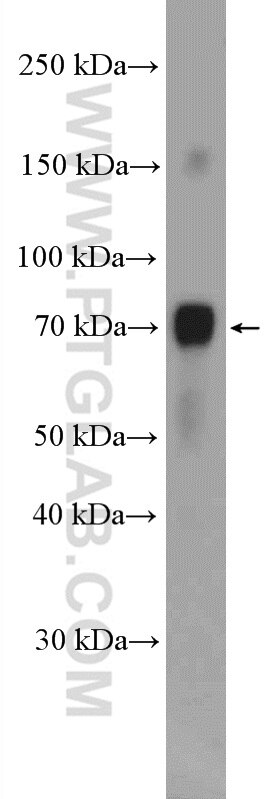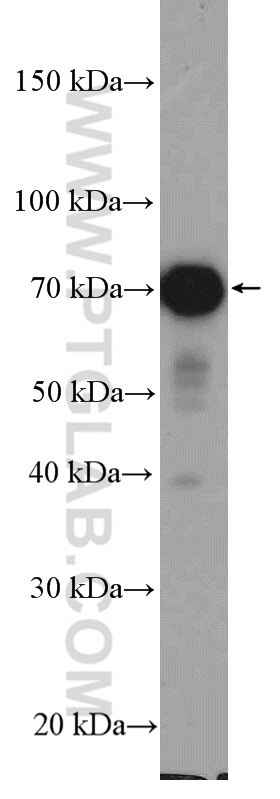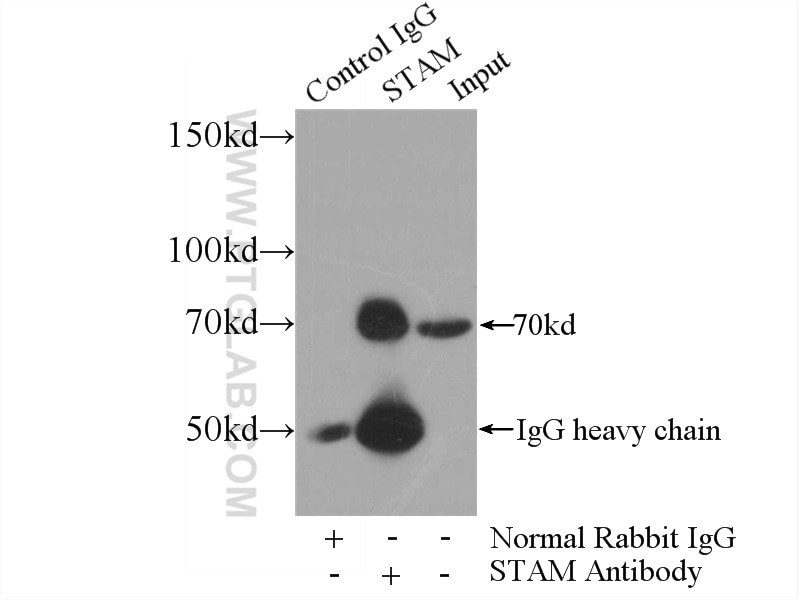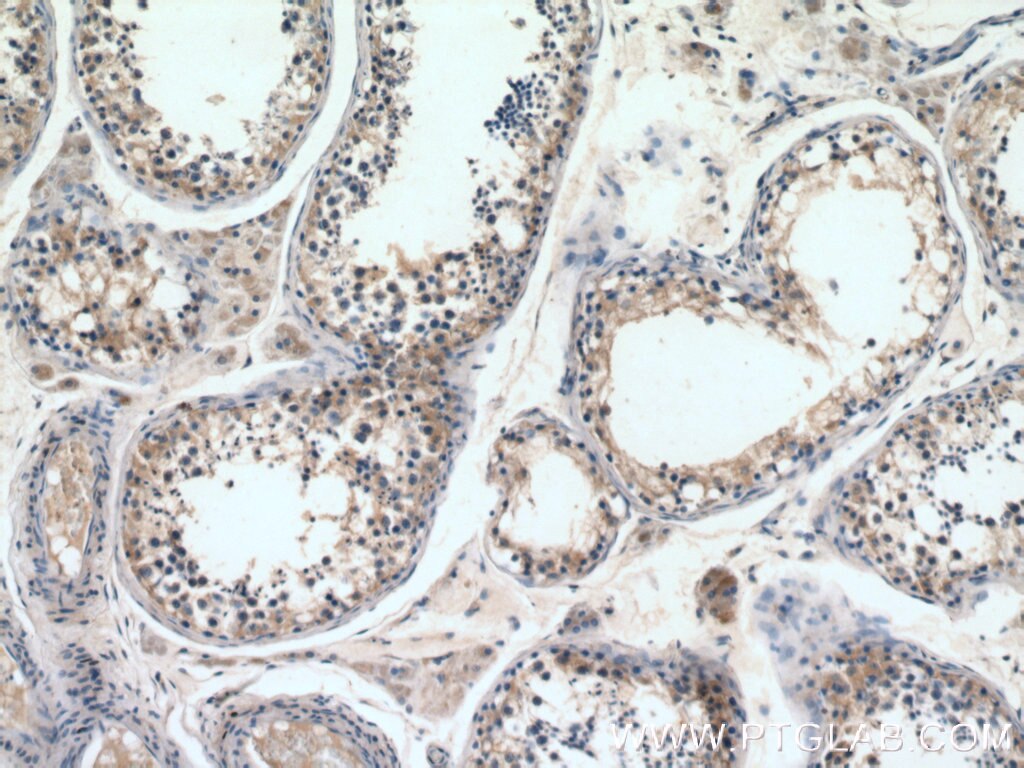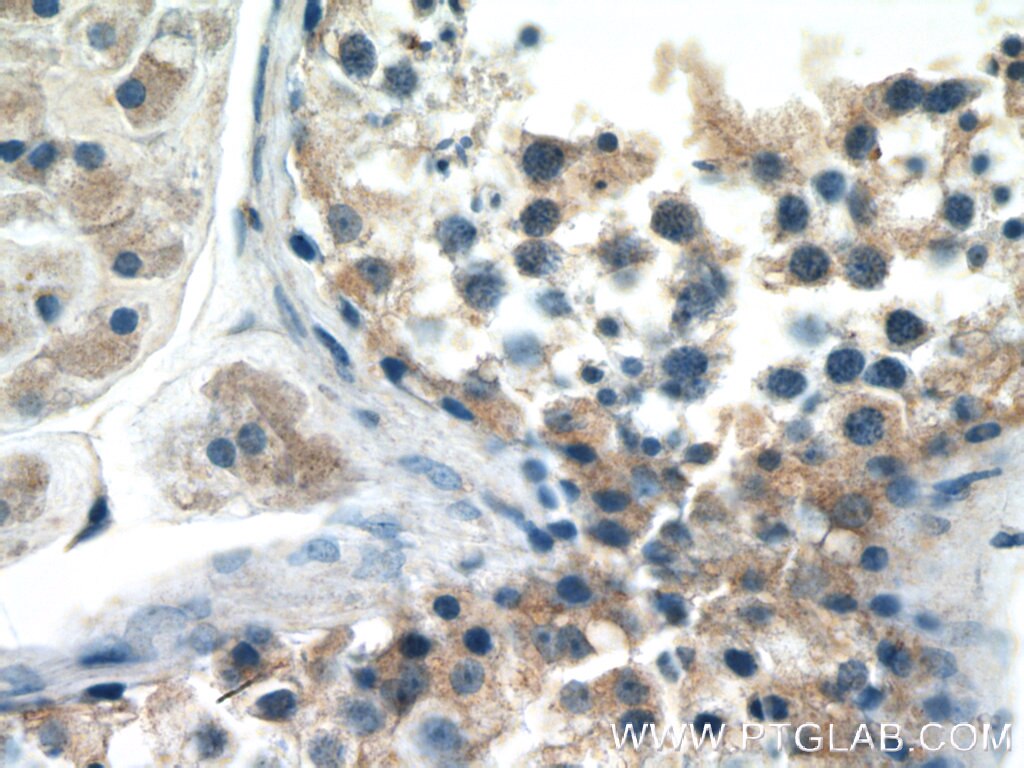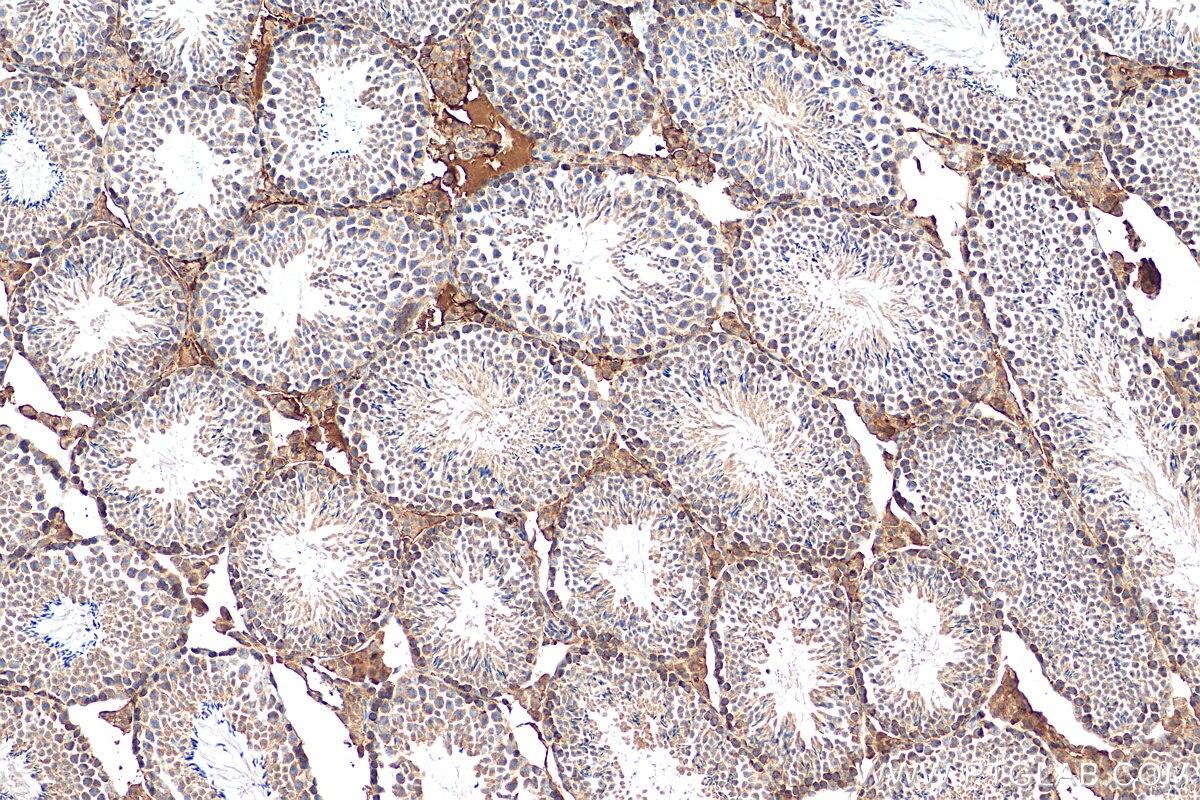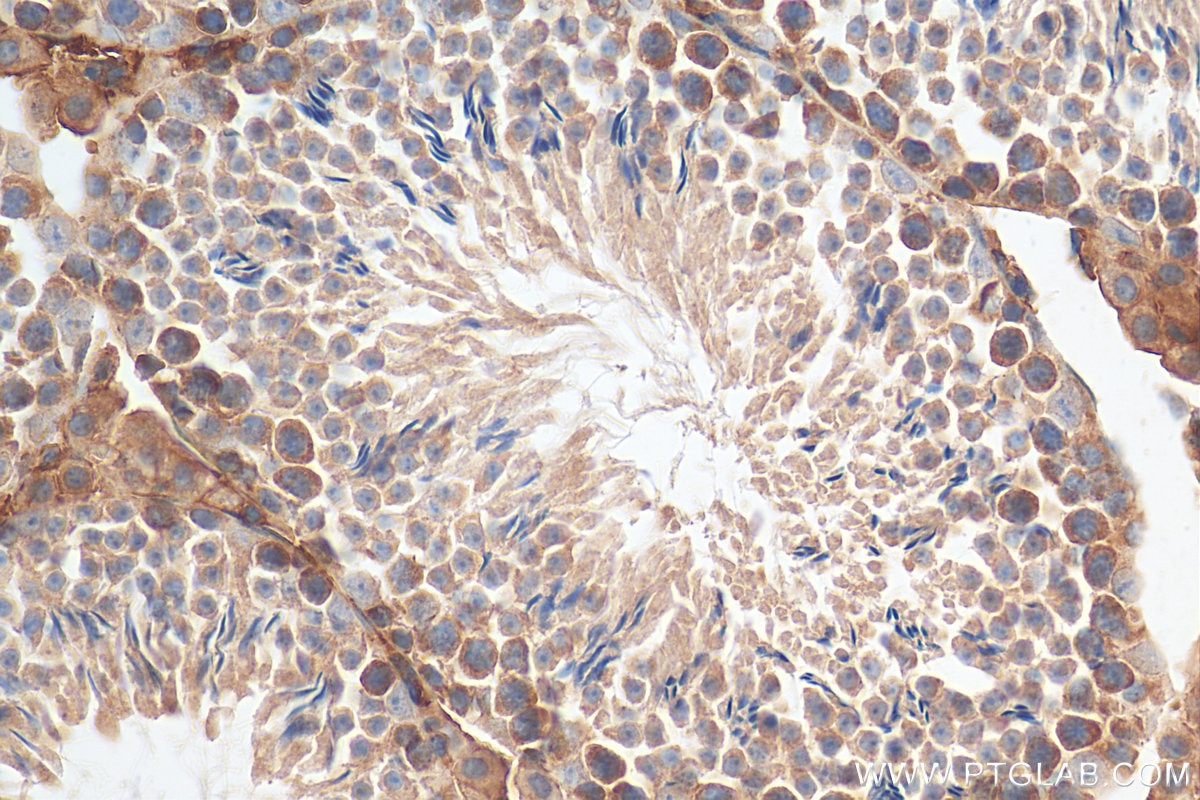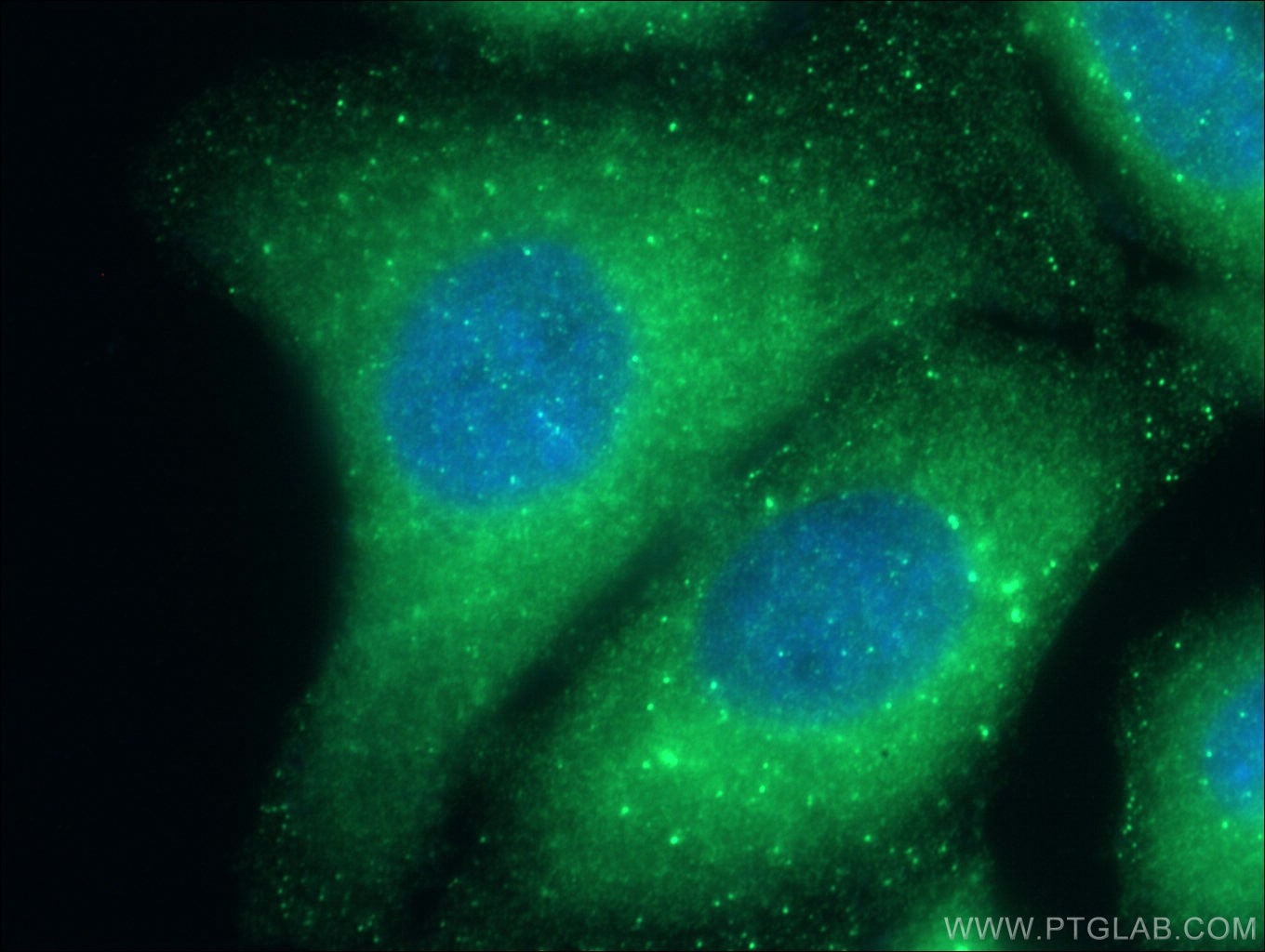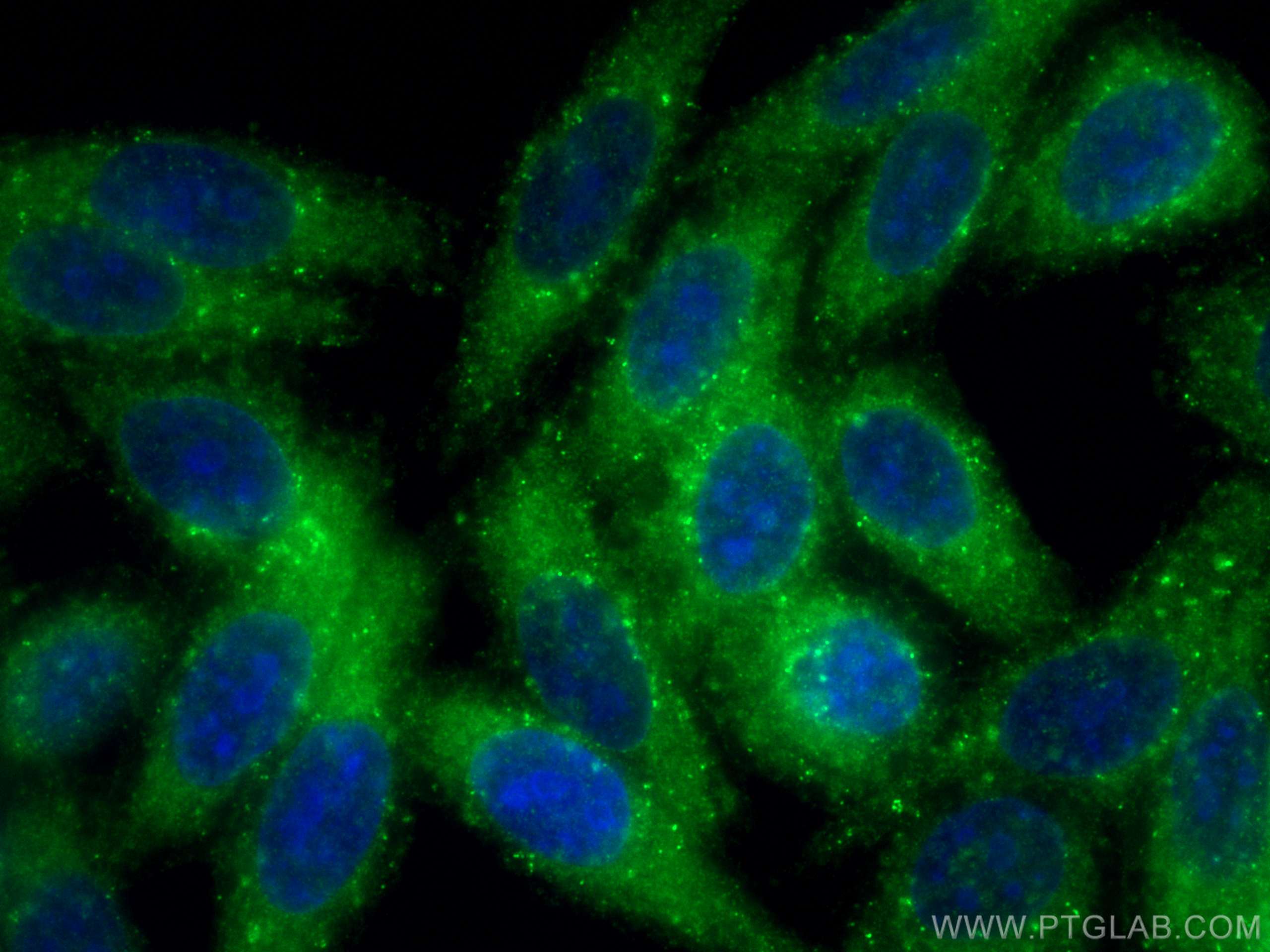- Phare
- Validé par KD/KO
Anticorps Polyclonal de lapin anti-STAM
STAM Polyclonal Antibody for WB, IHC, IF/ICC, IP, ELISA
Hôte / Isotype
Lapin / IgG
Réactivité testée
Humain, rat, souris et plus (1)
Applications
WB, IHC, IF/ICC, IP, CoIP, ELISA
Conjugaison
Non conjugué
N° de cat : 12434-1-AP
Synonymes
Galerie de données de validation
Applications testées
| Résultats positifs en WB | cellules HEK-293T, cellules C2C12, cellules Jurkat, cellules K-562, cellules MCF-7, cellules PC-3, cellules Raji, cellules SKOV-3, cellules Y79, multi-cellules, tissu cérébral de souris |
| Résultats positifs en IP | cellules PC-3 |
| Résultats positifs en IHC | tissu testiculaire humain, tissu testiculaire de souris il est suggéré de démasquer l'antigène avec un tampon de TE buffer pH 9.0; (*) À défaut, 'le démasquage de l'antigène peut être 'effectué avec un tampon citrate pH 6,0. |
| Résultats positifs en IF/ICC | cellules HepG2, |
Dilution recommandée
| Application | Dilution |
|---|---|
| Western Blot (WB) | WB : 1:2000-1:16000 |
| Immunoprécipitation (IP) | IP : 0.5-4.0 ug for 1.0-3.0 mg of total protein lysate |
| Immunohistochimie (IHC) | IHC : 1:50-1:500 |
| Immunofluorescence (IF)/ICC | IF/ICC : 1:50-1:500 |
| It is recommended that this reagent should be titrated in each testing system to obtain optimal results. | |
| Sample-dependent, check data in validation data gallery | |
Applications publiées
| KD/KO | See 5 publications below |
| WB | See 17 publications below |
| IF | See 8 publications below |
| CoIP | See 1 publications below |
Informations sur le produit
12434-1-AP cible STAM dans les applications de WB, IHC, IF/ICC, IP, CoIP, ELISA et montre une réactivité avec des échantillons Humain, rat, souris
| Réactivité | Humain, rat, souris |
| Réactivité citée | Humain, singe, souris |
| Hôte / Isotype | Lapin / IgG |
| Clonalité | Polyclonal |
| Type | Anticorps |
| Immunogène | STAM Protéine recombinante Ag3112 |
| Nom complet | signal transducing adaptor molecule (SH3 domain and ITAM motif) 1 |
| Masse moléculaire calculée | 59 kDa |
| Poids moléculaire observé | 70 kDa |
| Numéro d’acquisition GenBank | BC030586 |
| Symbole du gène | STAM |
| Identification du gène (NCBI) | 8027 |
| Conjugaison | Non conjugué |
| Forme | Liquide |
| Méthode de purification | Purification par affinité contre l'antigène |
| Tampon de stockage | PBS with 0.02% sodium azide and 50% glycerol |
| Conditions de stockage | Stocker à -20°C. Stable pendant un an après l'expédition. L'aliquotage n'est pas nécessaire pour le stockage à -20oC Les 20ul contiennent 0,1% de BSA. |
Informations générales
STAM, also named as STAM1, belongs to the STAM family. It is involved in intracellular signal transduction mediated by cytokines and growth factors. Upon IL-2 and GM-CSL stimulation, it plays a role in signaling leading to DNA synthesis and MYC induction. STAM may also play a role in T-cell development. It is involved in down-regulation of receptor tyrosine kinase via multivesicular body (MVBs). Together with HRS, STAM forms ESCRT-0. STAM was originally identified as an adaptor protein involved in cytokine signaling.(PMID:20505072)
Protocole
| Product Specific Protocols | |
|---|---|
| WB protocol for STAM antibody 12434-1-AP | Download protocol |
| IHC protocol for STAM antibody 12434-1-AP | Download protocol |
| IF protocol for STAM antibody 12434-1-AP | Download protocol |
| IP protocol for STAM antibody 12434-1-AP | Download protocol |
| Standard Protocols | |
|---|---|
| Click here to view our Standard Protocols |
Publications
| Species | Application | Title |
|---|---|---|
Nat Cell Biol Endosomal membrane tension regulates ESCRT-III-dependent intra-lumenal vesicle formation. | ||
Mol Cell Systematically defining selective autophagy receptor-specific cargo using autophagosome content profiling. | ||
Development Identification of STAM1 as a novel effector of ventral projection of spinal motor neurons. |
